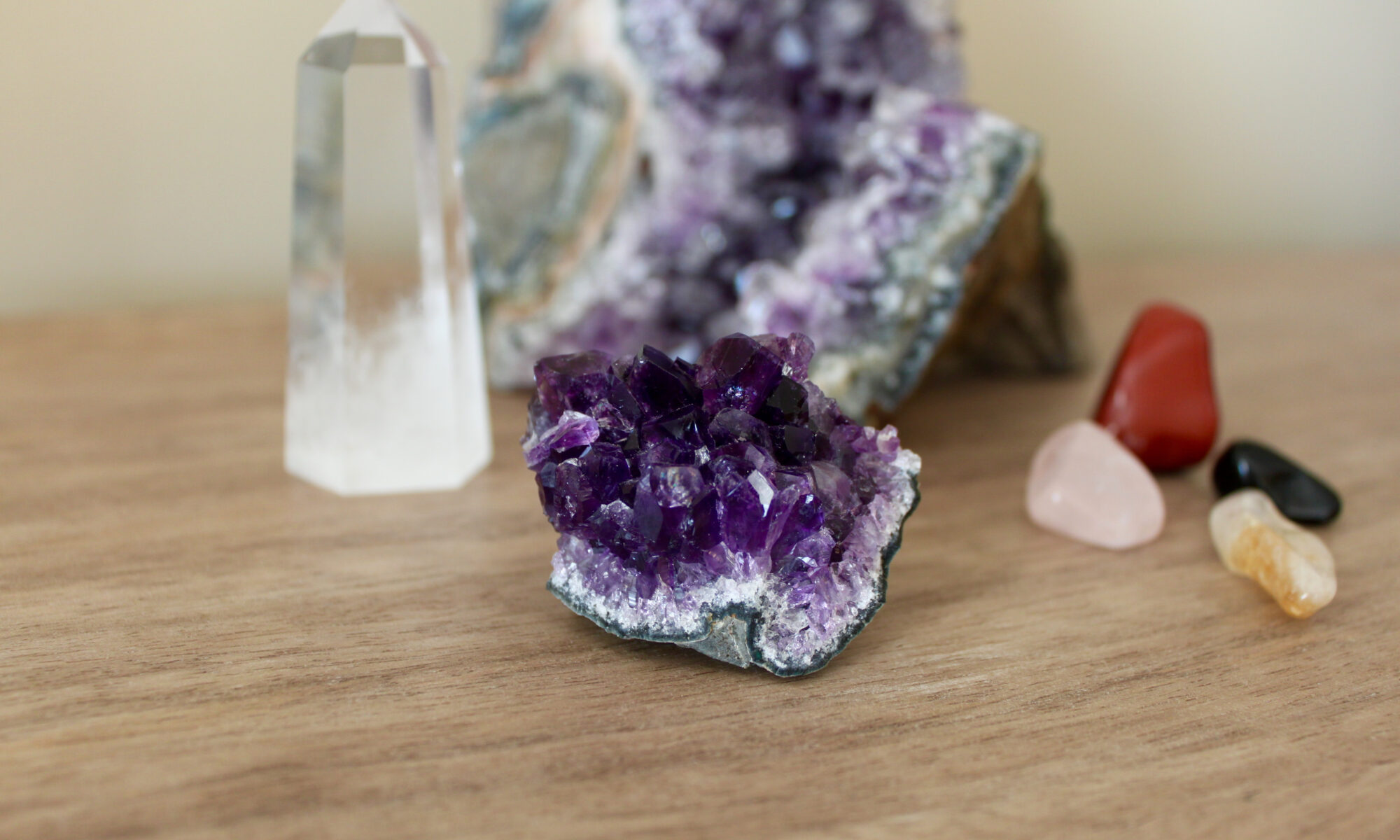Amethyst is one of the most well-known and beloved crystals, cherished for its stunning purple hues and powerful spiritual properties. Known as the “Stone of Tranquility,” it has been used for centuries to promote calmness, intuition, and spiritual growth. Whether worn as jewelry, placed in a sacred space, or used in meditation, this crystal is a must-have for those seeking balance and inner peace.

History & Origins
Amethyst has a rich history dating back thousands of years. The ancient Greeks believed it could prevent intoxication, hence its name derived from the Greek word amethystos, meaning “not drunk.” Egyptian royalty adorned themselves with it for protection, while medieval European soldiers wore it into battle for courage and strength. This beautiful quartz crystal has been found in locations around the world, including Brazil, Uruguay, Russia, and Africa.

Physical Properties of Amethyst
- Color: Ranges from light lavender to deep violet.
- Hardness: 7 on the Mohs scale, making it relatively durable.
- Structure: A variety of quartz with iron and natural irradiation causing its purple color.
- Identifying Real Amethyst: Look for deep, even coloration, slight imperfections, and natural variations in hue. Fake amethyst is often too perfectly colored or overly saturated.
Metaphysical & Healing Properties
Amethyst is also renowned for its ability to bring emotional, spiritual, and physical healing.
- Emotional Healing: Calms the mind, reduces stress and anxiety, and promotes emotional stability.
- Spiritual Growth: Enhances intuition, strengthens connection to higher consciousness, and aids in meditation.
- Physical Benefits: Said to aid in relieving headaches, improving sleep quality, and supporting the immune system.
- Chakra Association: Primarily linked to the Crown Chakra and Third Eye Chakra, aiding in spiritual awareness and clarity.
- Zodiac & Planetary Connections: Associated with Pisces, Aquarius, and Jupiter.

How to Use Amethyst
- Meditation & Energy Work: Hold it or place it on your Third Eye Chakra to enhance intuition.
- Jewelry & Carrying: Wearing it in rings, pendants, or bracelets keeps its calming energy close.
- Home & Workspace Placement: Keeping an amethyst cluster in the bedroom or workspace promotes a peaceful environment.
- Pairing with Other Crystals: Works well with rose quartz for emotional healing and clear quartz for amplified spiritual energy.
Cleansing & Charging
- Best Cleansing Methods: Smoke cleansing with sage or palo santo, placing under running water, or using sound vibrations.
- Charging Methods: Leaving under the moonlight (especially a full moon) or placing on a selenite charging plate. Avoid prolonged exposure to direct sunlight, as it may fade the color.
Amethyst is a versatile and powerful crystal that brings peace, clarity, and spiritual connection. Whether you seek emotional balance, a stronger intuition, or a calming presence in your home, it is a wonderful companion on your journey.
